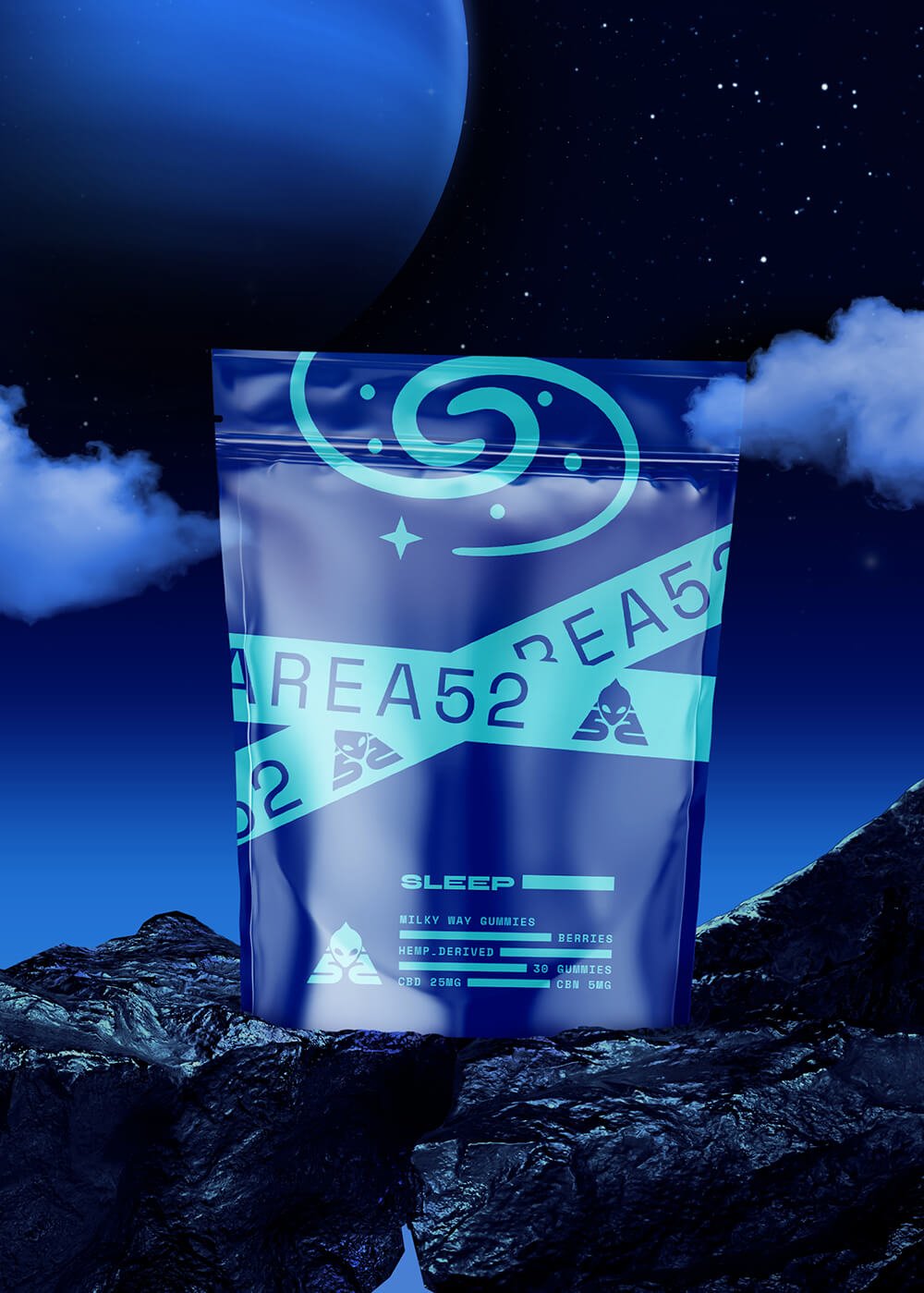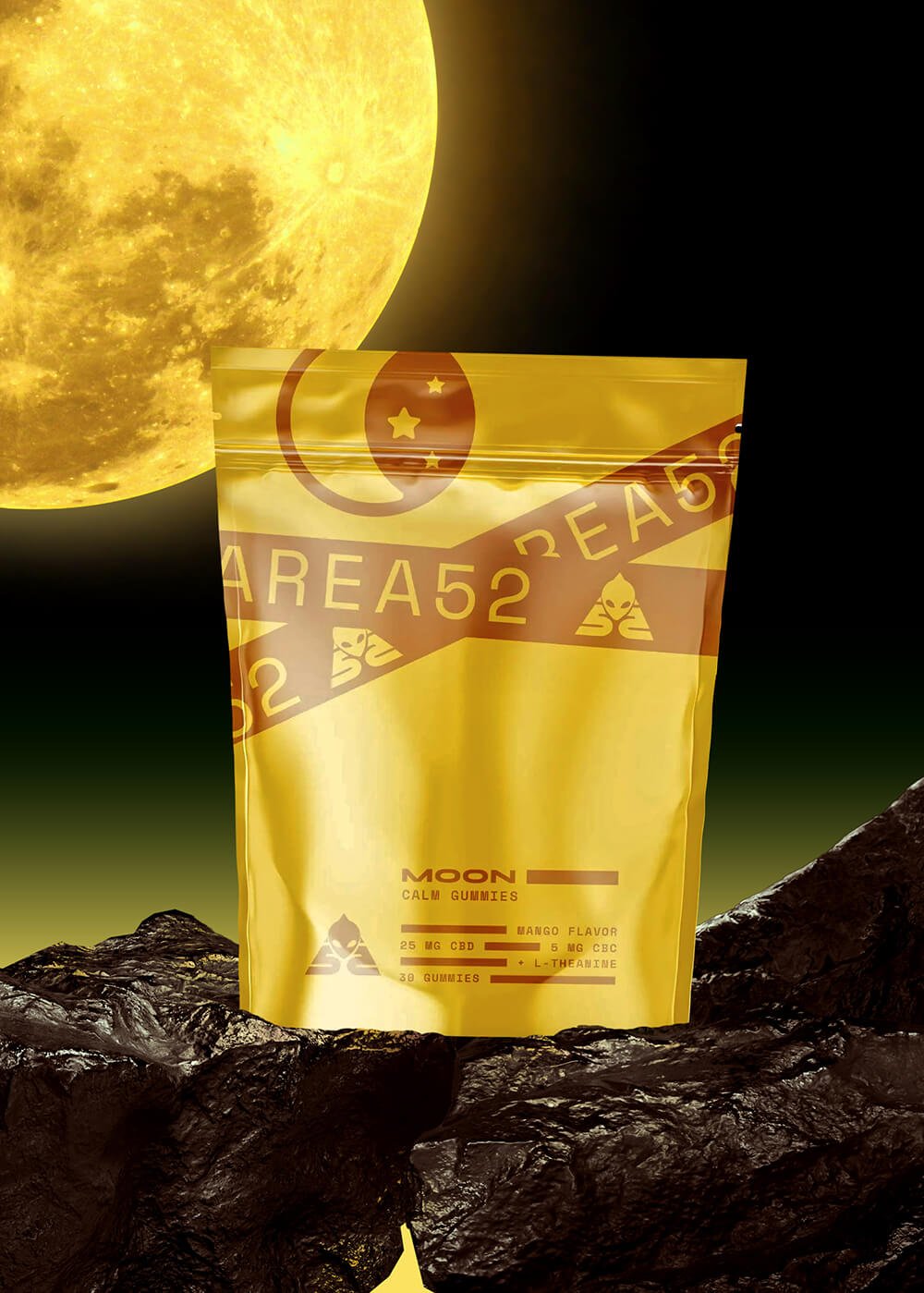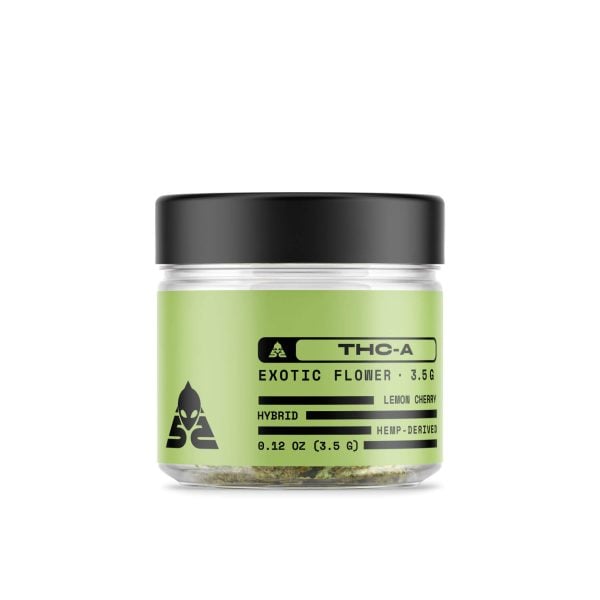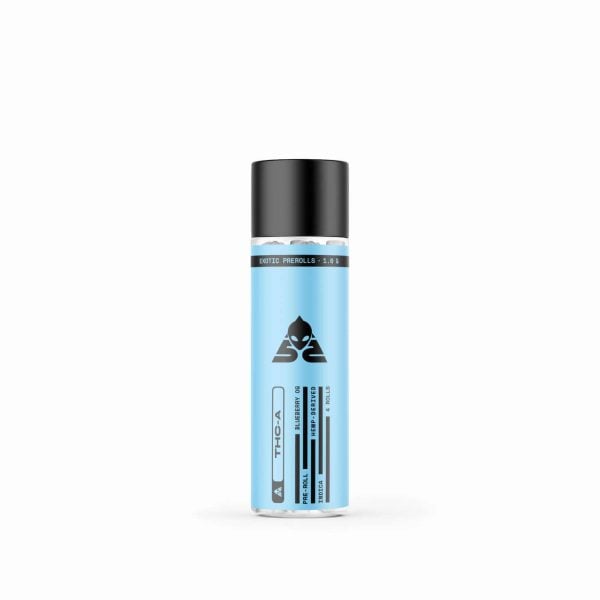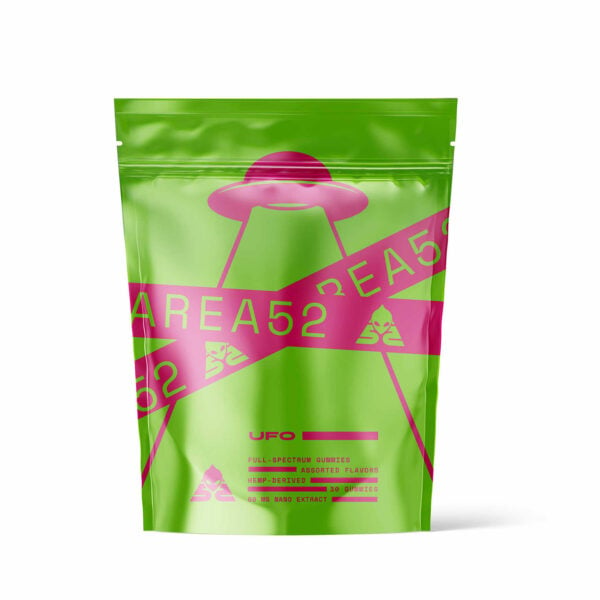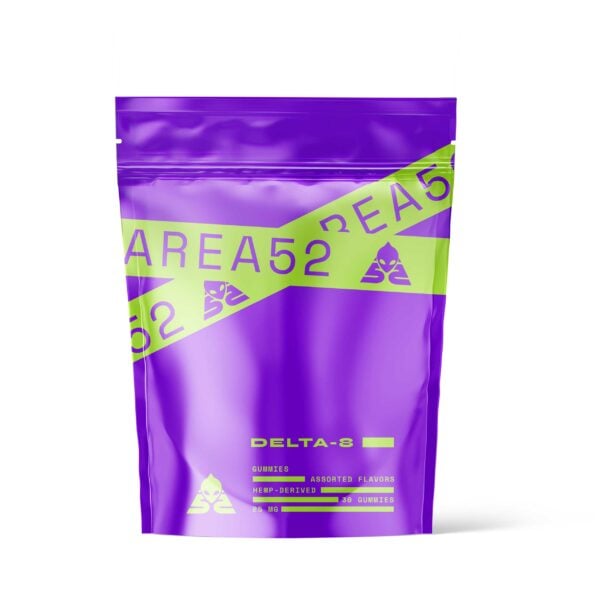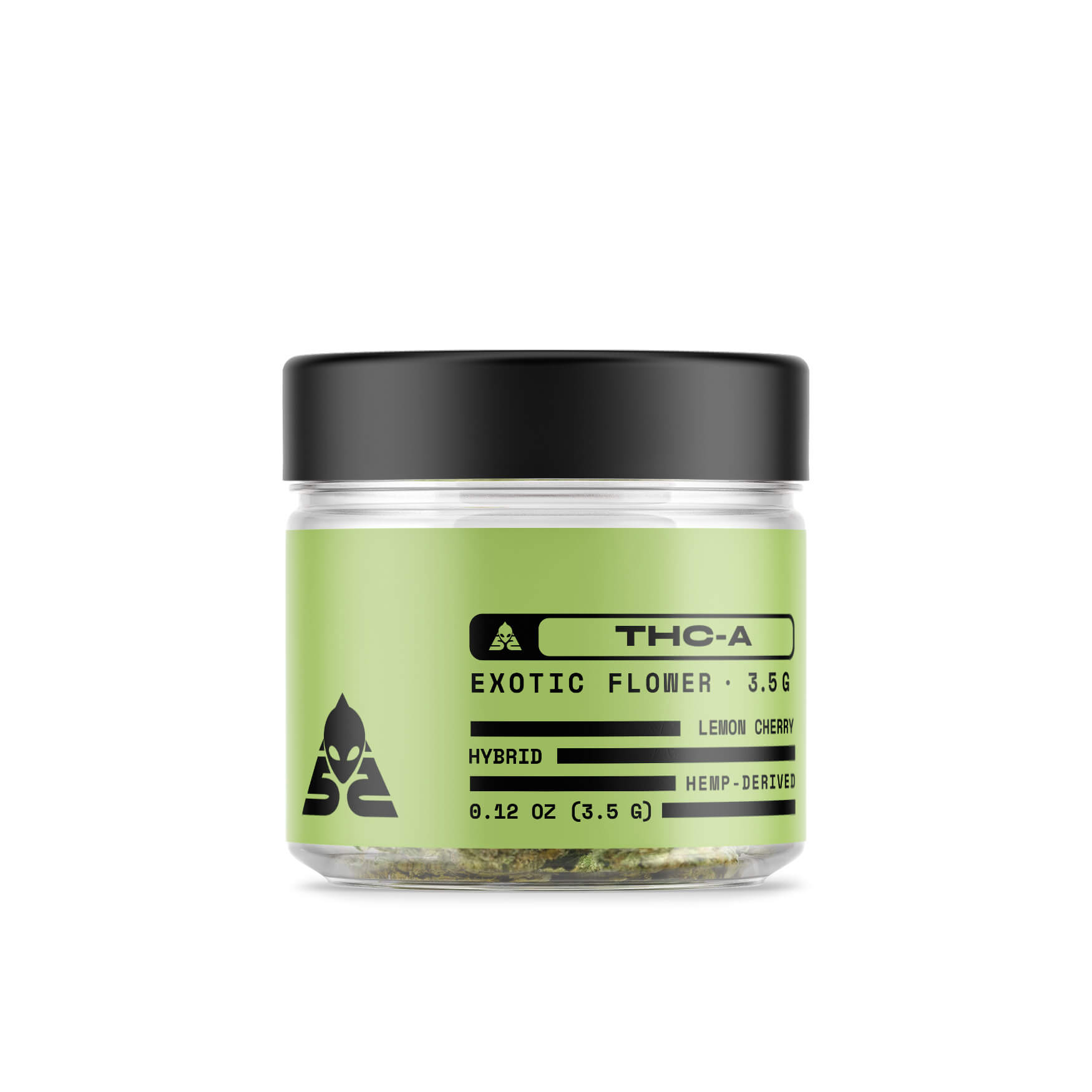Delta 10 Flower
Delta-10 flower is an infused hemp product designed for those seeking an energizing, uplifting experience.
Often compared to classic sativa strains, delta-10 is known for its creative and cerebral effects — perfect for fueling productive flow states or stimulating creative expression.
Looking to explore other, fully legal, cannabis options?
Check out our delta-8 flower, delta-9 flower, or THCA flower pages to learn more.
Power Up: How to Use Delta-10 Flower ⚡
Delta-10 THC flower is infused hemp designed for smoking, vaping, or baking — offering a versatile way to explore this rare cannabinoid.
- 🔥 Smoke It — Roll it into a joint, pack it in a pipe, or load a pre-roll for easy use.
- 🌬 Vape It — Use a dry herb vaporizer to preserve terpenes and enjoy a smoother inhale.
- 🍪 Bake It — Decarb and infuse into butter or oil to create edibles with precise dosing.
For more infused flower options, check out THCA Flower or Delta-8 Flower.
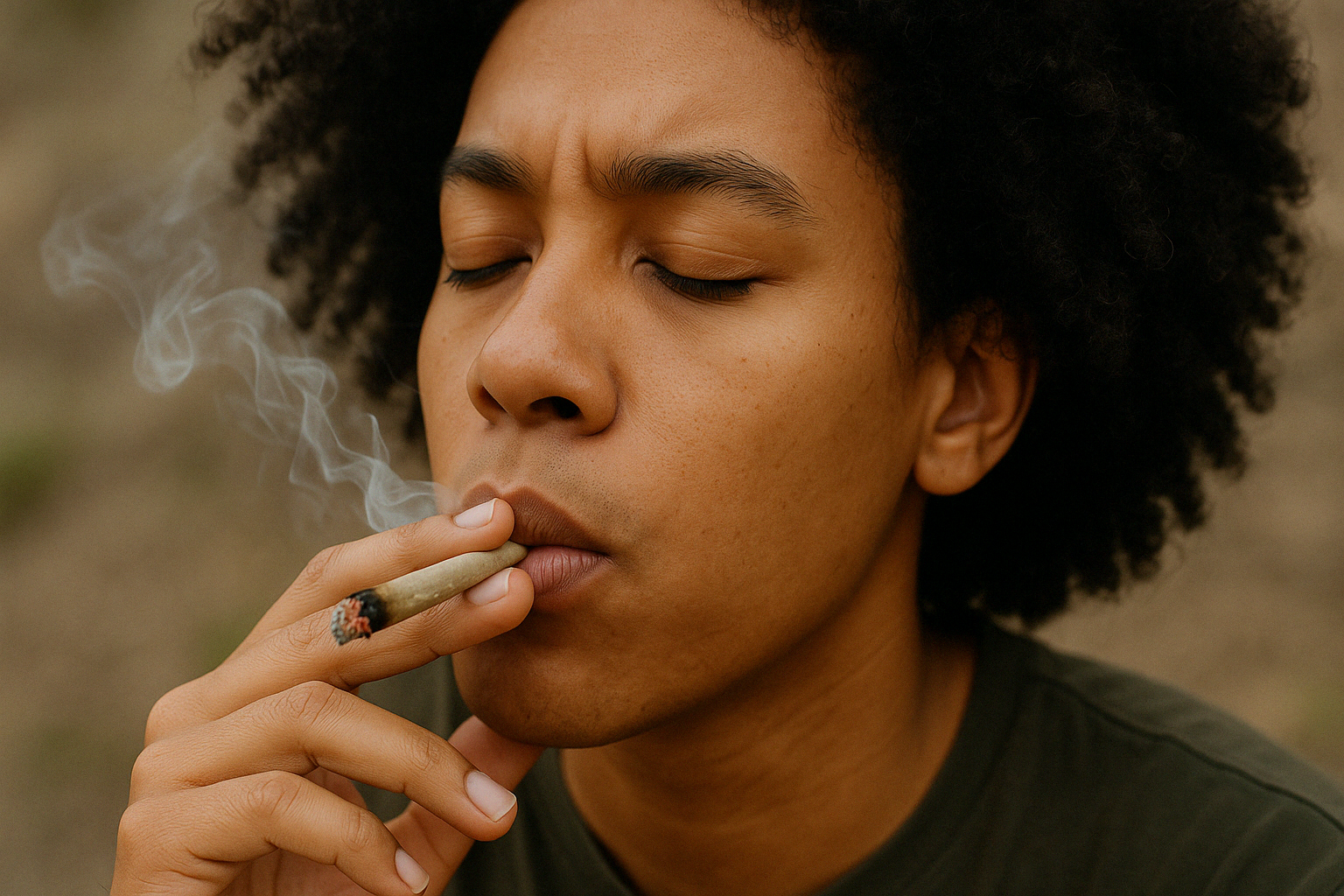
THC Variants: Finding the Right Fit 🌿
Cannabis flower contains various cannabinoids, each offering unique effects:
- Delta-8 THC Flower — Calming and gentle, ideal for relaxation and stress relief.
- Delta-9 THC Flower — Potent and euphoric, delivering bold effects for experienced users.
- Delta-10 THC Flower — Uplifting and energizing, perfect for daytime focus and creativity.
- THCA Flower — Non-psychoactive in its raw form but converts to potent delta-9 THC when heated, delivering powerful effects.

Why Choose Area 52?
At Area 52, we don’t just make Delta-10 flower — we craft an experience. Our commitment to quality, transparency, and innovation sets us apart from the rest.
- Top-Tier Infusion Process — We start with premium, organically-grown hemp flower and infuse it with high-potency THC diamonds.
- Lab-Tested for Purity — Every batch of our hemp flower is third-party tested for potency, residual solvents, pesticides, & contaminants.
- No Cutting Agents or Synthetic Additives — We keep it clean and natural, avoiding harsh chemicals or artificial enhancers that could compromise quality.
- Strain-Specific Options — Whether you’re looking for fruity, citrus-forward sativa effects or earthy, piney hybrid balance, we source only high-terpene, aromatic strains that amplify our flower’s unique properties.
- Fast & Secure Shipping — We deliver nationwide with discreet, secure packaging so your order arrives fresh and ready to enjoy.
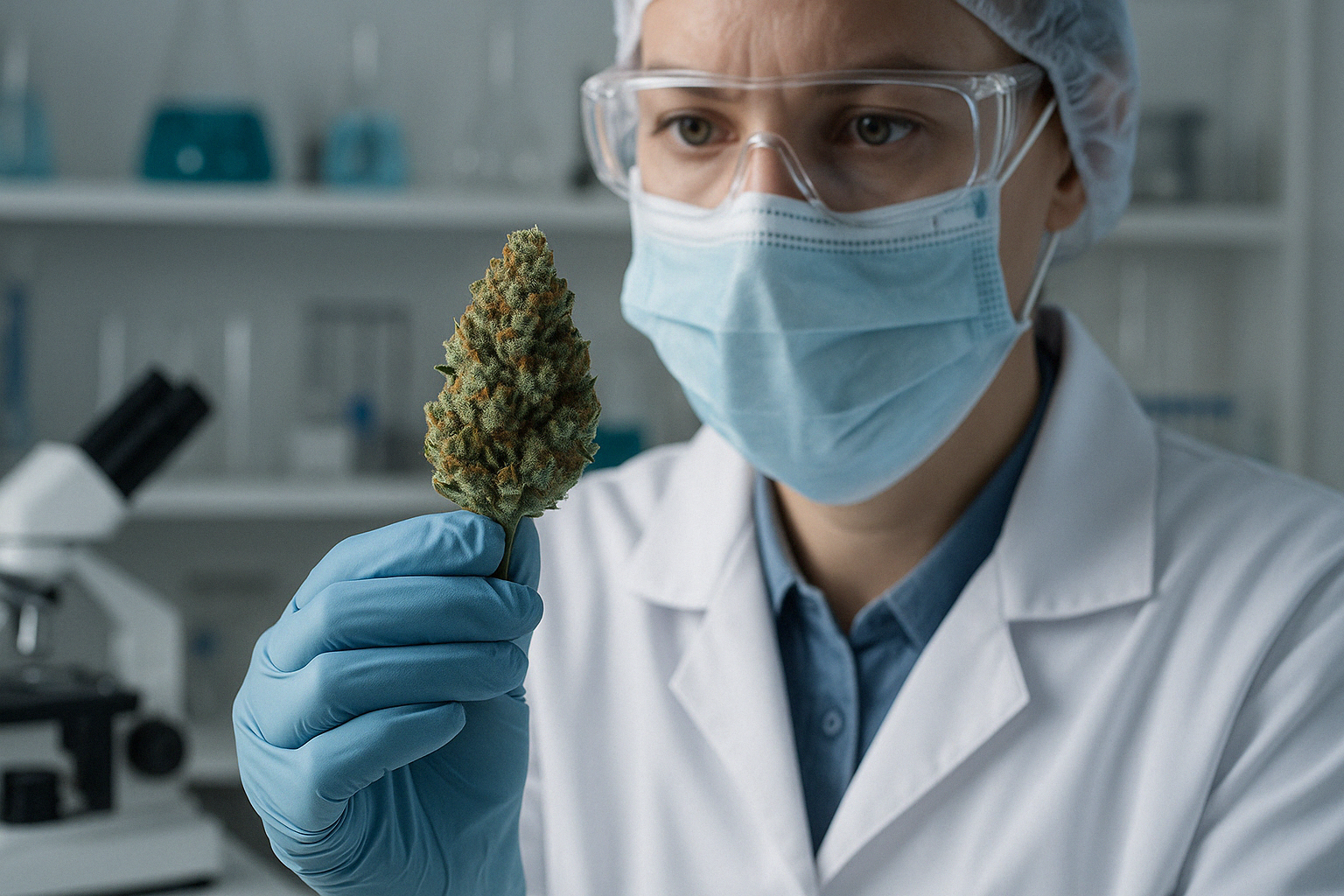
Our Commitment to Quality 🔬
We believe in full transparency when it comes to our Delta-10 products. Every batch undergoes third-party lab testing to verify:
- Potency Levels — Ensuring accurate THC content.
- Residual Solvents — Free from harmful extraction chemicals.
- Pesticides & Contaminants — Screening for purity and safety.
- Terpene Profiles — Confirming strain-specific flavor and effects.
Lab reports are available for every product so you can verify exactly what’s in your Delta-10 flower before you buy.
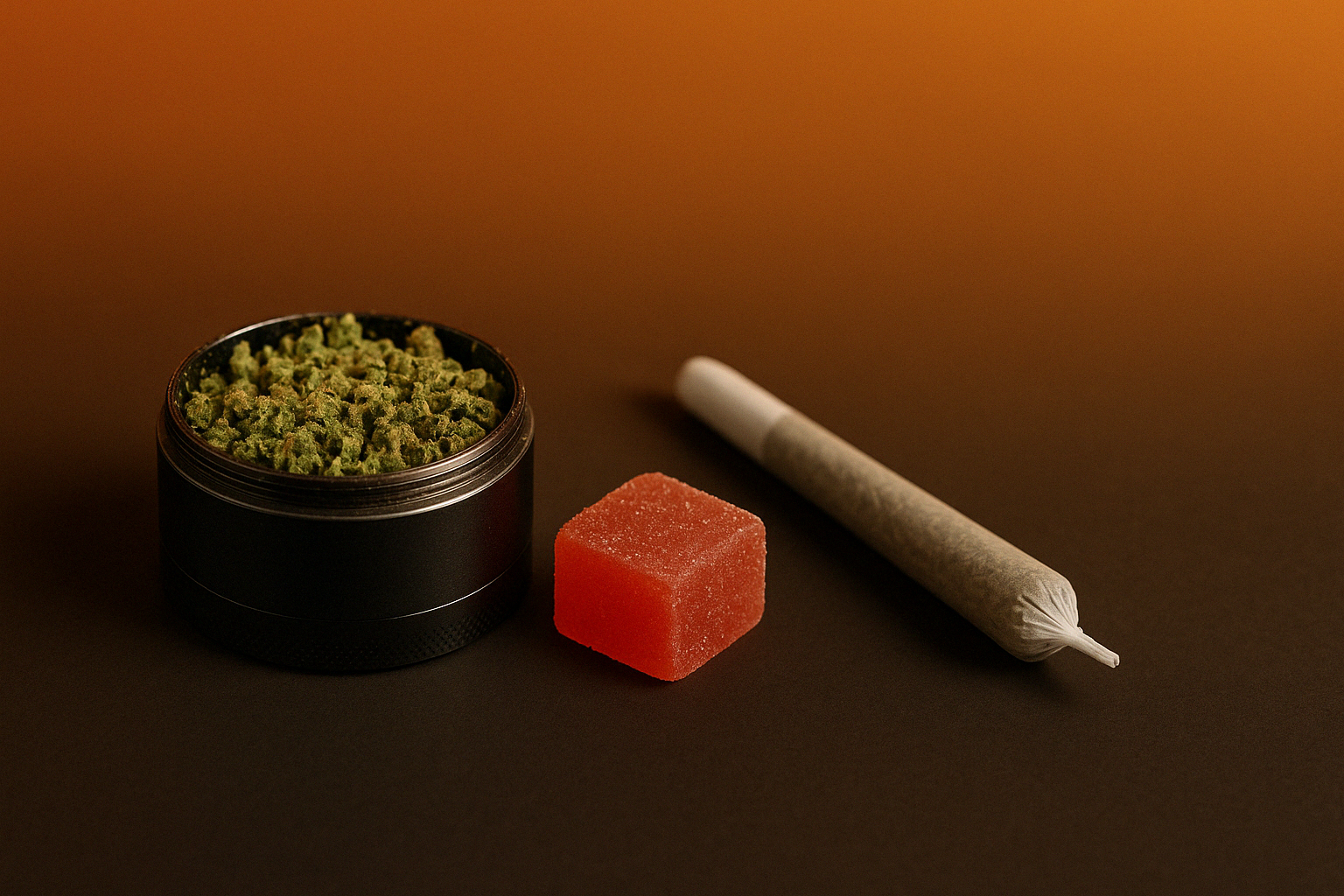
FAQs: Delta-10 Flower
What Is Delta-10 Flower?
Delta-10 flower is made using premium hemp flower infused with delta-10 THC diamond extracts, enhancing the natural cannabinoids and terpenes in the plant. This creates a smooth, flavorful product known for its energizing and uplifting effects, perfect for those seeking a balanced yet stimulating experience.
How Is Delta-10 Flower Used?
You can enjoy delta-10 flower in several ways:
- Smoking: Roll it into a joint or pack it into a pipe for fast-acting effects.
- Vaping: Use a dry herb vaporizer to maximize flavor and preserve terpenes.
- Baking: Decarboxylate the flower to infuse it into butter or oil for edibles.
- Each method offers a unique experience, so you can choose the one that best fits your needs.
What Are The Effects Of Delta-10 Flower?
Delta-10 THC is uplifting and mildly psychoactive, making it ideal for daytime activities, creative pursuits, or socializing. Its effects are more stimulating than delta-8 but less intense than delta-9, providing a middle ground that many users find enjoyable and functional.
Is Delta-10 Flower Legal?
Yes, delta-10 flower is federally legal under the 2018 Farm Bill, as long as it’s hemp-derived and contains less than 0.3% delta-9 THC by weight. Some states have stricter regulations, so check your local laws before purchasing.
How Does Delta-10 Compare to Delta-9 or Delta-8?
Delta-10 THC offers a distinct experience compared to its counterparts (more stimulating, in general).
Delta-8 THC is best known for its relaxing and calming effects, making it ideal for unwinding. Delta-9 THC delivers stronger psychoactive effects, which can be overwhelming for some users.
In contrast, delta-10 THC provides a clear-headed, uplifting effect that enhances focus and creativity, making it a great option for daytime use without the intensity of delta-9.
How Should I Store My Delta-10 Flower?
Always store delta-10 flower in an airtight container, away from light, heat, and air, to maintain its potency and flavor. A glass jar with a sealed lid in a cool, dark place is ideal for preserving freshness.
Can Delta-10 Flower Be Blended with Other Cannabinoids?
Yes! Our delta-10 flower can be combined with delta-8, delta-9, THCA, or CBD flower as well as various concentrates (such as THC diamonds, CBD diamonds, dabs, live resins, and more) for more balanced or intense effects.
Will Delta-10 Flower Show Up on a Drug Test?
Yes. Delta-10 THC metabolizes similarly to delta-9 THC, meaning it can trigger a positive result on a standard drug test. If you’re subject to testing, we recommend avoiding delta-10, or any other type of THC flower.
How Potent Is Delta-10 Compared to Delta-8 & Delta-9?
Delta-10 is milder than delta-9 but slightly stronger than delta-8 in terms of psychoactive effects. While delta-9 provides a more intense, traditional THC high,dDelta-10 offers a lighter, more functional buzz that’s great for daytime use.
How Long Do the Effects of Delta-10 Flower Last?
The effects of delta-10 flower typically last between 2 to 4 hours, depending on your metabolism, dosage, and tolerance. Delta-10 flower shares a similar onset and duration of effects as both delta-9 and delta-8 flower.
References
| [1] | Chattopadhyay, M., Chanda, A., & Bhattacharya, A. (2024). Therapeutic application of cannabis and its derivatives. Elsevier. https://doi.org/10.1016/b978-0-443-15489-8.00003-7 |
| [2] | Holdman, R., Vigil, D., Robinson, K., Shah, P., & Contreras, A. E. (2022). Safety and Efficacy of Medical Cannabis in Autism Spectrum Disorder Compared with Commonly Used Medications. Mary Ann Liebert Inc. https://doi.org/10.1089/can.2020.0154 |
| [3] | Davenport, S. (2020). Public Health and Safety Consequences of Liberalizing Drug Laws: Insights from Cannabis Legalization. RAND Corporation. https://doi.org/10.7249/rgda508-1 |
| [4] | Islam, F. A. (2017). Cannabis Exacerbation of Bipolar Disorder. MedCrave Group, LLC. https://doi.org/10.15406/mojamt.2017.03.00026 |
| [5] | Copersino, M. L., Boyd, S. J., Tashkin, D. P., Huestis, M. A., Heishman, S. J., Dermand, J. C., Simmons, M. S., & Gorelick, D. A. (2006). Cannabis Withdrawal Among Non‐Treatment‐Seeking Adult Cannabis Users*. Wiley. https://doi.org/10.1080/10550490500418997 |
| [6] | Salz, T., Meza, A. M., Chino, F., Mao, J. J. J., Raghunathan, N. J., Jinna, S., Brens, J., Hernandez, M., & Korenstein, D. (2022). Sociodemographic predictors of cannabis use among patients with cancer residing in states with legalized cannabis.. American Society of Clinical Oncology (ASCO). https://doi.org/10.1200/jco.2022.40.28_suppl.299 |
| [7] | IVERSEN, L. (2004). Cannabis and the law — high time for reform?. Cambridge University Press (CUP). https://doi.org/10.1017/s1062798704000444 |
| [8] | Drugs, N. O. o., & Crime (2019). Cannabis et Hallucinogènes. United Nations. https://doi.org/10.18356/9789210041751c005 |
| [9] | da Rocha, A. G., Almeida, D. Q., & Almeida, M. (2021). Recreational cannabis consumption: a public health perspective. Oxford University Press (OUP). https://doi.org/10.1093/eurpub/ckab165.011 |
| [10] | Staples, A. J. (2024). Beer drinker perceptions of cannabis-infused beverages. Emerald. https://doi.org/10.1108/bfj-02-2024-0209 |
| [11] | Walter, D., Ballke, E., Schmidt, S., Lodziewski, S., Bollmann, T., Lorenz, G., & Ewert, R. (2005). Hämoptysen als Manifestation nach Cannabis-Inhalation. Georg Thieme Verlag KG. https://doi.org/10.1055/s-2005-864370 |
| [12] | Steinhart, B., Brooks-Russell, A., Kosnett, M. J., Subramanian, P. S., & Wrobel, J. (2023). A Video Segmentation Pipeline for Assessing changes in Pupil Response to Light After Cannabis Consumption. Cold Spring Harbor Laboratory. https://doi.org/10.1101/2023.03.17.533144 |
| [13] | Ben‐Zeev, B. (2021). Epilepsy and cannabis: facing reality. Wiley. https://doi.org/10.1111/dmcn.15081 |
| [14] | Lucas-Parrales, E. N., Bazán-Mosquera, A. Ó., & Merchán-Córdova, O. J. (2023). Conductas adictivas: situación actual de cannabis y consecuencias en adolescentes.. MQRinvestigar. https://doi.org/10.56048/mqr20225.7.3.2023.3690-3703 |
| [15] | Sarris, J., Sinclair, J., Karamacoska, D., Davidson, M., & Firth, J. (2020). Medicinal cannabis for psychiatric disorders: a clinically-focused systematic review. Springer Science and Business Media LLC. https://doi.org/10.1186/s12888-019-2409-8 |
| [16] | Jin, D., Dai, K., Xie, Z., & Chen, J. (2020). Secondary Metabolites Profiled in Cannabis Inflorescences, Leaves, Stem Barks, and Roots for Medicinal Purposes. Springer Science and Business Media LLC. https://doi.org/10.1038/s41598-020-60172-6 |
| [17] | Hutflesz, C., & Parihar, V. (2019). Medical Cannabis Induced Acute Pancreatitis and Hyperemesis Syndrome in a Patient with Complex Regional Pain Syndrome. Informa UK Limited. https://doi.org/10.1080/24740527.2019.1592390 |
| [18] | Bosse, J. (2020). Before the High Court: the legal systematics of Cannabis. Informa UK Limited. https://doi.org/10.1080/10383441.2020.1804671 |
| [19] | Hirst, R. A., Lambert, D. G., & Notcutt, W. G. (1998). Pharmacology and potential therapeutic uses of cannabis. Elsevier BV. https://doi.org/10.1093/bja/81.1.77 |
| [20] | Brodbeck, J., Matter, M., & Moggi, F. (2006). Association Between Cannabis Use and Sexual Risk Behavior Among Young Heterosexual Adults. Springer Science and Business Media LLC. https://doi.org/10.1007/s10461-006-9103-9 |
| [21] | Mata, H. P. U. I. P., Tarragona, & Chorto, S. P. (2020). Diferencias de género en la dependencia de cannabis y las razones de consumo. Impacto en el trastorno bipolar y los primeros episodios.. SEPD. https://doi.org/10.17579/sepd2020o001 |
| [22] | Van Dam, N. T., Earleywine, M., & DiGiacomo, G. (2008). Polydrug use, cannabis, and psychosis‐like symptoms. Wiley. https://doi.org/10.1002/hup.950 |
| [23] | Kumar, R. N., Chambers, W. A., & Pertwee, R. G. (2001). Pharmacological actions and therapeutic uses of cannabis and cannabinoids. Wiley. https://doi.org/10.1046/j.1365-2044.2001.02269.x |
| [24] | Saeed, S. R., Timms, M. S., & Woolford, T. J. (1993). Cannabis in the ear – the legal aspects. Cambridge University Press (CUP). https://doi.org/10.1017/s0022215100125034 |
| [25] | Jakarasi, M. (2025). Smoked or Bewitched? The Relationship Between Cannabis Use and Mental Illness Among the Shona Persons in Zimbabwe. Springer Science and Business Media LLC. https://doi.org/10.1007/s11013-025-09898-4 |
| [26] | Mumm, L. E., Huckins, G., Lueck, L., Piskorowski, K., & Sladky, K. K. (2022). Cannabis toxicity in a pet rabbit (Oryctolagus cuniculus). Elsevier BV. https://doi.org/10.1053/j.jepm.2022.06.004 |
| [27] | Bucchino, L., Monzani, A., Fracon, S., Genoni, G., Cena, T., & Bellone, S. (2019). Cannabis-Related Diffuse Alveolar Hemorrhage in a 16-Year-Old Patient: A Case Report. Frontiers Media SA. https://doi.org/10.3389/fped.2019.00468 |
| [28] | Saade, A., Carty, M., Shahisavandi, N., Rajaraman, K., LeBlanc, M., Wrigley, S., & Rajaraman, M. (2024). 160 Cannabis Use in Cancer Patients Six Years Post-Legalization in Canada. Elsevier BV. https://doi.org/10.1016/s0167-8140(24)03651-x |
| [29] | Chatwin, C. (2011). Weed, Need and Greed: A Study of Domestic Cannabis Cultivation. By Gary Potter (London: Free Association Books, 2010, 276pp. 17.95 pb). Oxford University Press (OUP). https://doi.org/10.1093/bjc/azr046 |
| [30] | Chen-Sankey, J., La Cparia, K., Glasser, A., Padon, A. A., Moran, M. B., Wagoner, K. G., Jackson, K. M., & Berg, C. J. (2024). Associations between e-cigarette marketing exposure and vaping nicotine and cannabis among U.S. adults, 2021. Cold Spring Harbor Laboratory. https://doi.org/10.1101/2024.02.03.24302079 |
| [31] | Ghannem, M., Belhadj, I., Tritar, A., Moukala, T., Amri, N., Noury, A., & Zaghdoudi, M. (2013). Cannabis et syndromes coronariens aigus avec sus-décalage de ST. Elsevier BV. https://doi.org/10.1016/j.ancard.2013.09.002 |
| [32] | Brown, T., Schmitt, R., Milavetz, G., Gaffney, G., Brooks-Russell, A., & Berka, C. (2021). Cannabis use and reported effects on driving among adults in Iowa. Informa UK Limited. https://doi.org/10.1080/15389588.2021.1983382 |
| [33] | Venderová, K., Růžička, E., Voříšek, V., & Višňovský, P. (2004). Survey on cannabis use in Parkinson's disease: Subjective improvement of motor symptoms. Wiley. https://doi.org/10.1002/mds.20111 |
| [34] | Chan, K. (2014). Validating a gas chromatography-mass spectrometric method and sample classification procedure for cannabis profiling using cannabinoids from case samples. Informa UK Limited. https://doi.org/10.1080/00450618.2014.882985 |
| [35] | Akbari, M., Bahadori, M. H., Mohammadkhani, S., Kolubinski, D. C., Nikčević, A. V., & Spada, M. M. (2021). A discriminant analysis model of psychosocial predictors of problematic Internet use and cannabis use disorder in university students. Elsevier BV. https://doi.org/10.1016/j.abrep.2021.100354 |
| [36] | Devi, V., & Khanam, S. (2019). Comparative study of different extraction processes for hemp (Cannabis sativa) seed oil considering physical, chemical and industrial-scale economic aspects. Elsevier BV. https://doi.org/10.1016/j.jclepro.2018.10.036 |
| [37] | Hayatbakhsh, M. R., McGee, T. R., Bor, W., Najman, J. M., Jamrozik, K., & Mamun, A. A. (2008). Child and adolescent externalizing behavior and cannabis use disorders in early adulthood: An Australian prospective birth cohort study. Elsevier BV. https://doi.org/10.1016/j.addbeh.2007.10.004 |
| [38] | NILSSON, J. L. G., NILSSON, I. M., AGURELL, S., AKERMARK, B. +., & LAGERLUND, I. (1971). ChemInform Abstract: METABOLISMUS VON CANNABIS 11. MITT. SYNTH. VON DELTA(7)‐TETRAHYDROCANNABINOL UND 7‐HYDROXY‐TETRAHYDROCANNABINOL. Wiley. https://doi.org/10.1002/chin.197133295 |
| [39] | Wallace, A. L., Wade, N. E., Hatcher, K. F., & Lisdahl, K. M. (2018). Effects of Cannabis Use and Subclinical ADHD Symptomology on Attention Based Tasks in Adolescents and Young Adults. Oxford University Press (OUP). https://doi.org/10.1093/arclin/acy080 |
| [40] | Felicity, W., Samantha, B., Lisa-marie, G., Rodney, C., Juanita, T., Patricia, M., Stuart, J., Ben, L., Hannah, C., & Nadia, S. (2013). An investigation of Mismatch Negativity in current and ex- cannabis users using a feature controlled method. Frontiers Media SA. https://doi.org/10.3389/conf.fnhum.2013.213.00021 |
| [41] | Norberg, M. M., Olivier, J., Schmidt, N. B., & Zvolensky, M. J. (2013). Cannabis Use among Treatment‐Seeking Smokers: Motives and the Moderating Effects of Anxiety Sensitivity. Wiley. https://doi.org/10.1111/j.1521-0391.2013.12054.x |
| [42] | Espinoza, L. M., Naranjo, N. A., & Cardenas, M. M. (2023). Extraction, separation, and purification of cannabinoids from the Cannabis sativa L. plant using dry ice and solvents such as hexane and ethanol to determine the most efficient method. IEEE. https://doi.org/10.1109/etcm58927.2023.10308993 |
| [43] | Gawrysiak, M., Loomis, D., Ehmann, S., Wayne, S., & Armao, M. (2024). Environmental Suppression Mediates the Relationship Between Posttraumatic Stress and Cannabis Use Among Trauma-Exposed College Students. Alcohol Research Documentation, Inc.. https://doi.org/10.15288/jsad.23-00344 |
| [44] | Myhre, M. Ø., Rognli, E. B., Walby, F. A., Bramness, J. G., & Mehlum, L. (2024). The annual trend of suicide rates from 2010 to 2021 in patients with cannabis use disorder – a national registry study. Springer Science and Business Media LLC. https://doi.org/10.1007/s00127-024-02781-4 |
| [45] | Choo, E. K., Trent, S. A., Nishijima, D. K., Eichelberger, A., Kazmierczak, S., Ye, Y., Brasel, K. J., Audett, A., & Cherpitel, C. J. (2024). Risk of motor vehicle collision associated with cannabis and alcohol use among patients presenting for emergency care. Elsevier BV. https://doi.org/10.1016/j.aap.2024.107459 |
| [46] | Dyar, C., Feinstein, B. A., Crosby, S., Newcomb, M. E., & Whitton, S. W. (2021). Social Context of Cannabis Use: Associations With Problematic Use, Motives for Use, and Protective Behavioral Strategies Among Sexual and Gender Minorities Assigned Female at Birth. Springer Publishing Company. https://doi.org/10.1891/lgbtq-2020-0075 |
| [47] | Bo, A., Martinez, A., Zhou, J., Bauer, D., Joseph, P. L., & Goings, T. C. (2025). Age patterns and predictors of cannabis initiation among biracial and monoracial U.S. youth. Informa UK Limited. https://doi.org/10.1080/00952990.2025.2461520 |
| [48] | Bruijnzeel, A. W., Knight, P., Panunzio, S., Xue, S., Bruner, M. M., Wall, S. C., Pompilus, M., Febo, M., & Setlow, B. (2019). Effects in rats of adolescent exposure to cannabis smoke or THC on emotional behavior and cognitive function in adulthood. Springer Science and Business Media LLC. https://doi.org/10.1007/s00213-019-05255-7 |
| [49] | Bhattacharyya, S., Iyegbe, C., Atakan, Z., Martin-Santos, R., Crippa, J. A., Xu, X., Williams, S., Brammer, M., Rubia, K., Prata, D., Collier, D. A., & McGuire, P. K. (2014). Protein kinase B (AKT1) genotype mediates sensitivity to cannabis-induced impairments in psychomotor control. Cambridge University Press (CUP). https://doi.org/10.1017/s0033291714000920 |
| [50] | Huỳnh, C., Beaulieu‐Thibodeau, A., Fallu, J., Bergeron, J., Jacques, A., & Brochu, S. (2022). Typologies of Canadian young adults who drive after cannabis use: A two‐step cluster analysis. Wiley. https://doi.org/10.1002/bsl.2575 |

